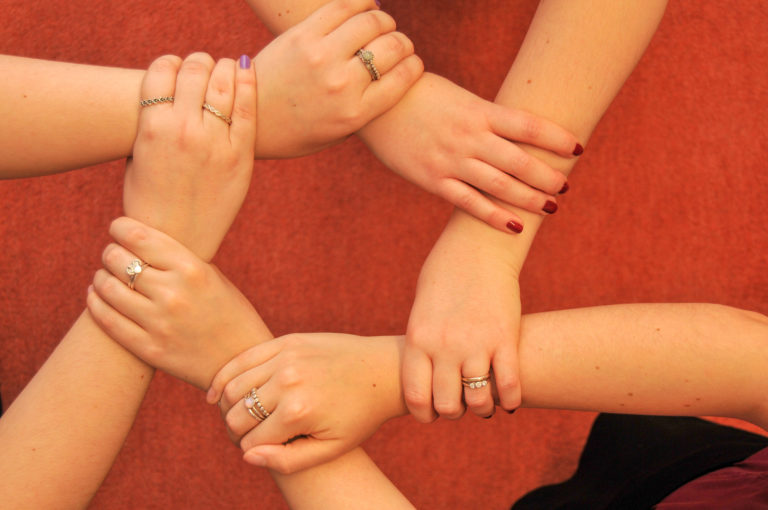We speak to Rachel Suddart about her experience with the unusually named condition.
I didn’t even know how to pronounce Raynaud’s until Choose Occupational Health asked me to help them with this blog. Apparently, it’s “ray-nose” and although everyone up to now has called it a disease, the standard wording is phenomenon. I like it. Makes it sound much more glamorous than it actually is.
I started to suffer from Raynaud’s attacks when I was in my early 30s. My fingers often turned white and I lost the feeling in the tips of my fingers. Cold weather seemed to bring on the attacks as well as weird bouts when I was driving. Rubbing my fingers didn’t seem to help. It was usually a combination of getting them warm and simply waiting for time to pass. These were the main symptoms until bizarrely this week, my index finger started to hurt and over the next 24 hours, the middle section turned blue. I lost feeling in the top of my finger, my arm started to ache and that’s when I called the doctor.
After being examined, the doctor checked my breathing (all fine) and asked if I suffered from Raynaud’s Phenomenon. I said that yes, I did but had never had such extreme symptoms. She asked if I knew whether there was a reason I had it and when I said that it had never been investigated she ordered some blood tests to check that there was no underlying cause. She said I could try some temporary medication if I wanted to, but I declined and thankfully, within 24 hours the finger was back to normal.
I’m still waiting for the results of the blood tests (so I’m presuming they are normal) and for now I’m utilising the huge variety of gloves I have stashed away in the pockets of coats.
Sound familiar? It could well do. Many people (about 1 in 20) suffer from Raynaud’s Phenomenon at some point throughout their lives.
What is Raynaud’s?
Raynaud’s Phenomenon (often just called Raynaud’s) occurs when the extremities of the body change colour and may become painful. It is usually fingers and toes but sometimes other extremities can be affected such as the ears, tongue and nose. It is caused by a narrowing or constriction of blood vessels. There are 2 types, primary Raynaud’s and secondary Raynaud’s. Primary Raynaud’s usually develops in teenagers and young adults with secondary Raynaud’s being after 30. However, both can develop at any age.
What’s with the unusual name?
It is named after the man who first described it in 1862, Dr Maurice Raynaud. Raynaud was a French doctor.
What are the symptoms?
In primary Raynaud’s fingers turn white and cool. They can then turn bluish or purple or black in severe cases. As blood flow returns to the fingers, they go red and can tingle and throb. Sufferers may also experience numbness or pain.
Secondary Raynaud’s (see below) has additional symptoms that may include dry eyes or mouth, skin rashes, joint pain or arthritis, ulcers or gangrene, muscle weakness, difficulties in swallowing and breathlessness.
How long does it last?
Attacks can last from a few minutes to several hours. It varies from person to person. It is usually mild with infrequent and brief attacks that last only a few minutes. Occasionally it can be severe. This will involve repeated attacks that increase with severity and length as time goes on.
What brings on attacks?
Exposure to the cold, a change in temperature or emotional stress.
What causes it?
In most cases (9 out of 10) there is no known cause and we call this primary Raynaud’s. People who have this seem to have blood vessels that are just more sensitive than others. It is more common in women than men and it usually develops before the age of 30. Primary Raynaud’s often runs in families. Usually all fingers on both hands are affected. There is no underlying cause in these cases.
Less than 1 in 10 cases have what is called secondary Raynaud’s. This is when various underlying conditions of blood vessels, nerves, skin, joints or muscle (eg. multiple sclerosis, lupus, scleroderma etc.) exist and you develop Raynaud’s as a complication. You will often have additional symptoms such as joint pain, swelling or a rash. Symptoms may begin in just one or two fingers. They can rapidly progress and worsen.
Hand-arm vibration syndrome (vibration white finger) is a common cause of secondary Raynaud’s. Often diagnosed in road diggers, miners or shipyard workers, the repeated use of vibrating tools over a prolonged period can damage small blood vessels.
How do I know if I have it?
There are no tests to diagnose it. Diagnosis of primary Raynaud’s is done by the presence of basic symptoms (see above). If you have any additional symptoms that may suggest secondary Raynaud’s then blood tests may be carried out to detect underlying causes.
How do you treat it?
If symptoms are not severe, most people just live with it. In some cases, a doctor can prescribe medication which helps by opening up the small blood vessels. If you have primary Raynaud’s that is brought on by stress you may find that relaxation techniques or stress counselling may help. In rare and extreme cases hospital-based treatments may be recommended.
What can I do to help?
Stop smoking. Smoking can cause small blood vessels to narrow. By removing the chemicals from your body, symptoms may ease or disappear.
Speak to your doctor about other medication. Some medication can cause blood vessels to narrow. Always seek medical advice before stopping taking medicines.
Cut out tea and coffee. Caffeine can be a trigger in some people. Try cutting out drinks and medication that contain caffeine.
Keep warm. It’s tough to avoid cool environments when you live in the UK so when you are out and about, wrap up warm (your whole body) but pay particular attention to your hands and feet. Try warming up gloves and socks before you put them on.
Regular exercise. Our favourite magic cure here at Choose Occupational Health! Exercise improves circulation. Get wiggling!
Don’t touch cold objects. Wear gloves when removing things from the freezer.
And when an attack occurs….
Warm up quick! Try running your hands under warm water to speed up the process.
Is it permanent?
It varies. Some people with primary Raynaud’s may find that their symptoms disappear over time. If you have secondary Raynaud’s, being treated for the underlying condition may ease the symptoms. No two people are the same.
If your workforce operates outside, in cold environments or they handle vibrating tools, we can offer Hand Arm Vibration (HAV) assessments and regular monitoring and testing. Contact us today to ensure that your workers are protected and fit for action.

